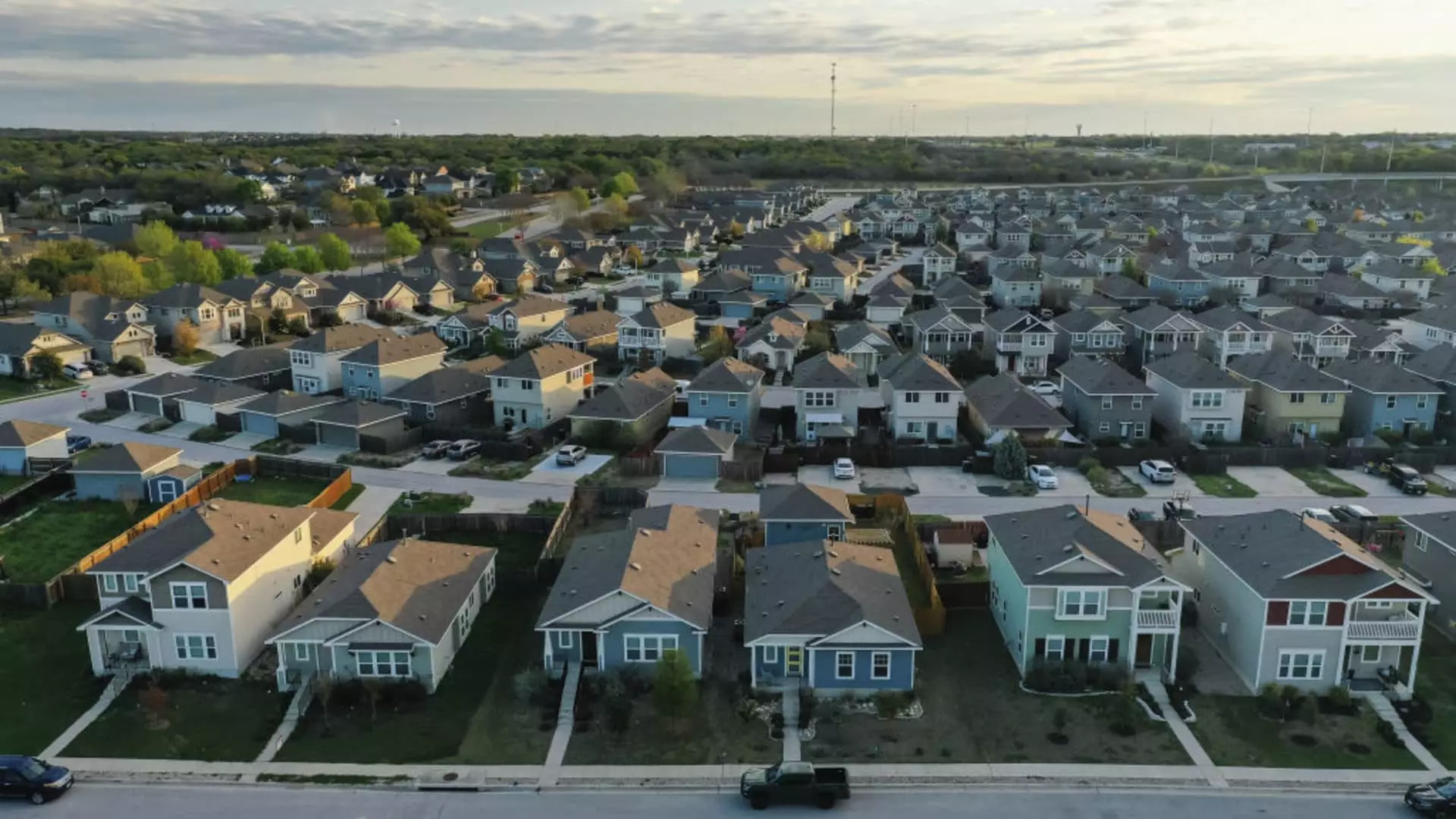The mortgage market experienced a curious rebound last week, showing a 1.7% increase in application volume despite the persistent climb in mortgage rates, which have now risen for four consecutive weeks. This parallel occurrence raises critical questions about market resilience and consumer behavior in the face of unfavorable conditions. Data from the Mortgage Bankers Association (MBA) revealed that the average interest rate for 30-year fixed-rate mortgages surged to 6.90%, marking the highest point since July—an adjustment that may influence buyer confidence and overall market stability.
Shifts in Purchase and Refinancing Trends
The increase in applications for home purchases, which rose by 2% week-over-week, coincided with a notable 1% decline compared to the same week last year. This suggests that while buyers are responding to market changes, year-over-year comparisons highlight a potential stagnation in growth for certain segments. FHA loans appeared particularly attractive to buyers, evidenced by a noteworthy 7% uptick in applications—perhaps fueled by greater housing inventory and competitive lending rates. Joel Kan, an economist with the MBA, pointed out that improving supply conditions in various markets have enabled some buyers to capitalize on available options.
In addition to purchase applications, refinancing saw a commendable surge, also increasing by 2% from the previous week and up 43% from the same period last year. This significant rise was mainly attributed to a 10% increase in VA loan applications, suggesting targeted interest among specific buyer demographics. This trend illustrates a potential shift in mortgage strategies as consumers adapt to changing interest rate landscapes and look for opportunities to restructure existing financial commitments.
The Influence of Global Events on Mortgage Rates
Current mortgage rates have experienced volatility, particularly in light of geopolitical events. A noticeable shift occurred this week when rates dipped after initial increases, following reports of U.S. military assistance to Ukraine. Such developments sparked shifts in investor behavior, reflecting a flight to safety as bond yields fell. Matthew Graham, COO at Mortgage News Daily, indicated that while this was a positive sign for potential homeowners, it was also tempered by overarching skepticism regarding the implications of ongoing global tensions.
This dynamic interplay between geopolitical events and mortgage market performance emphasizes the complexity of financial decision-making during times of uncertainty. Mortgage rates, traditionally sensitive to economic signals, illustrate how external factors can temper consumer enthusiasm or prompt caution in the marketplace.
The current landscape of mortgage applications is a testament to both resilience and uncertainty. Homebuyers are navigating an environment characterized by fluctuating rates and external pressures, indicating that while there are opportunities for buying and refinancing, significant hurdles remain. As we look forward, the interplay between interest rates, global events, and consumer sentiment will undoubtedly continue to shape the mortgage landscape in the coming weeks and months. Understanding these dynamics is crucial for all market participants—from buyers to lenders—as they make informed decisions amid ongoing fluctuations in the economy.

